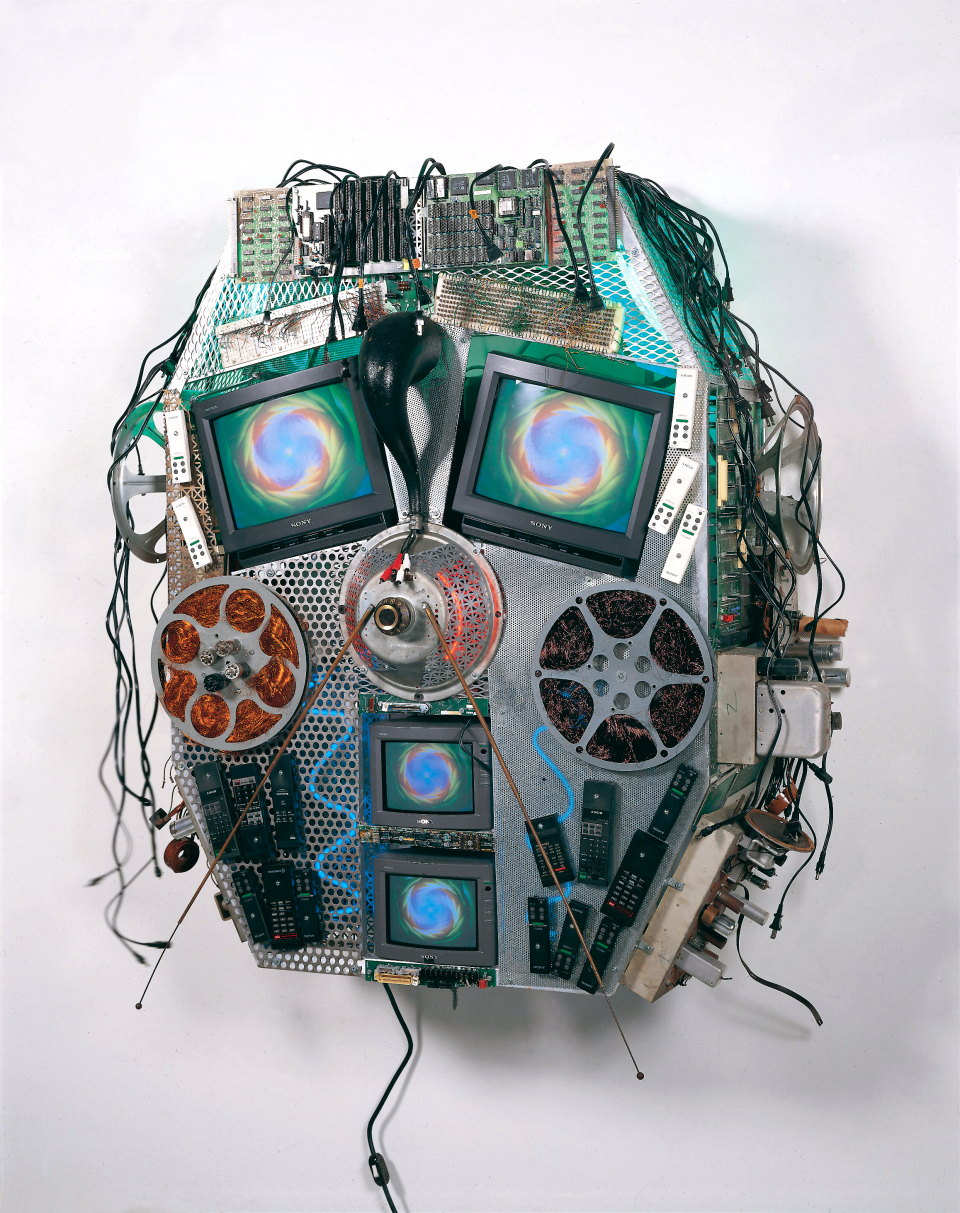Hector-Bau > Ebene 2 > Kubus 5
Intro
Nam June Paik constructed this video sculpture from screens, remote controls, cables, and computer parts, giving technology a human face. The eyes of »Australopithecus Man«—the title refers to an extinct species of human ape which belongs to the same family as man—are illuminated by abstract sequences of images. In this work Paik connects the history of humanity with the products of its technology in a humorous and paradoxical fashion, bringing together man’s prehistory and the postmodern.
Paik began experimenting with television sets in the early 1960s, and as an important Fluxus artist soon became a pioneer of video and media art. In 1963 he was the first to produce independent electronic images, and in the following decades continued to explore the possibilities of electronic media. The monitor and the camera became his most important instruments, although the artist, influenced by Zen Buddhism, was also active as a theorist and visionary. Thus in 1974 he dreamed of an “electronic superhighway” which would connect New York and Los Angeles, effectively anticipating the Internet.
On loan from the Friends of the Kunsthalle Mannheim e.V. since 1993
Transkription
Screens with ever-changing abstract video sequences form a pair of eyes and lips, loudspeaker parts serve as ears, antennae protrude from the nose. Cheekbones are emphasized by projector discs filled with copper wool. The mouth is framed by remote control devices. A cable-filled lock emerges from the middle of the video sculpture’s forehead, which was created in 1991 by Korean-born artist Nam June Paik. He titled it „Australopithecus Man“.
Australopithecus is a word made up of the Latin term for „southern“ and the Greek term for „ape“. It describes a predecessor of modern humans who lived in southern Africa from about 2 to 4 Million years BCE.
But what is the connection between this long-extinct great ape family and the neon lights, parts of old TV sets, screens and the laser-controlled video disc player of this skull?
In a humorous yet paradoxical way, Paik connects humanity’s prehistory to the remnants of their technical inventions, in a way creating a combination of fossils. Because that is what a remote control becomes as soon as it is replaced by the next, better model.
Already in the early 1960ies, Paik began working with electronic music and TV images, after having initially studied Art and Music History and Composition. He is said to have uttered the challenge: „TV has been attacking us all our lifetimes, now we’re hitting back.“ In 1965 he started working with video – a material the art world at large had not become aware of at the time. He became a pioneer of media art. Until his death in 2006 he playfully and quite ironically explored the manifold possibilities of electronic media.
